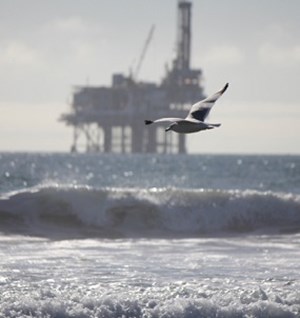Clarksons Research: Offshore oil and gas sector is “well set”
(WO) – The latest semi-annual Offshore Review and Outlook report has been released by Clarksons Research, profiling continued improving activity, utilization and day rates across the offshore oil and gas market. Summarizing the latest report, Steve Gordon, Managing Director of Clarksons Research, commented, “Offshore markets continue to strengthen, with the Clarksons Offshore Index (covering Rig, OSV and subsea day rates) up 29% y-o-y to 89, the highest level since 2014 (2013: 102, 2017: 45).
“Macroeconomic concerns aside, offshore oil & gas vessel markets seem “well set” for further positive gains against a backdrop of supportive energy prices, improved demand and limitations in fleet supply (following the post-2014 period of rebalancing). Meanwhile, strong momentum continues in the expansion of offshore wind, and 2022 saw further capacity growth, record levels of newbuild WTIV & C/SOV ordering and tight vessel markets.”
Energy Security
Energy pricing remains supportive of offshore activity. Oil prices have started 2023 in the “supportive” $80-90/bbl range (Brent averaged $99/bbl in 2022 with some easing in 2H). For now, oil markets seem “balanced”, although there are various factors that may impact (Chinese “re-opening”, Russian & OPEC supply cuts, shale production, geo-political uncertainty, macroeconomic weakness). Gas prices have corrected in recent months but prices may firm in 2H-23, as Europe continues to diversify away from Russian supply.
Offshore oil and gas is 16% of global energy supply (offshore wind is 0.4%), with offshore oil production expected to grow by 2.4% in 2023 to 25.6m bpd (27% of global oil) and offshore gas supply projected to grow by 3.6% to reach 131.7 billion cfd (33% of global gas). $103 billion of offshore oil and gas project CAPEX commitment was approved last year (2021: $89 billion); $107 billion is projected for 2023, up 31% vs the 2014-21 average but still 50% below the record $215 billion in 2011. A security of energy supply focus is also supporting investment, particularly for gas and wind. $49 billion of offshore wind project CAPEX is projected to be sanctioned in 2023, up from $22 billion in 2022.
Sector Strength
Rig markets continue to tighten, with Jack-Up utilization up 4pp y-o-y to 85% and Floater utilization up 8pp to 83%. An increasingly tight market is developing, given improvements in demand (JU: +10% in 2022, FL: +14%) and reductions in overall supply (down 24% since 2014).
High-spec rates for JUs are up 67% y-o-y to $115-135,000/day (amid record Middle East demand) and UDW floater rates firmed to roughly $450,000/day. Clarksons’ projections suggest demand will increase by approximately 80 units (JU: +50, FL: +30) in the next 2 years and given the yard position (about 2/3 of the 43 “stranded” newbuilds may deliver in this period) plus reactivation costs, utilization may exceed 93%.
OSV markets are improving, with demand up by a further 8% in 2022 (end-22 utilization: 71%). Clarksons’ OSV Rate Index is up 30% Y-o-Y to 147 points (Jan-21: 82, Jan-14: 167). Clarksons’ projections suggest an extra 400 boats, approximately, will be needed globally over the next two years (demand grew by roughly 200 last year). With modest supply growth (estimated 50 newbuild deliveries p.a. from legacy orders), further improvements in utilization are likely. Subsea vessel markets remain tight; global MSV utilization rose to 83% in Q3-22, with the MSV Rate Index up 35% Y-o-Y.
MOPU newbuilding activity is building, with 15 awards of a record $15.6 billion in 2022. Despite some concerns around cost inflation and limitations in yard capacity for FPSOs, 18 MOPU contract awards of roughly $20 billion are projected in 2023 (incl. 7 FPSOs in South America).
In general, newbuild ordering will be limited in the coming years in oil & gas but “conversations” are starting, with some OSV projects now becoming realistic. A focus on reducing emissions is developing. Alternative fuels may be a feature of new orders, while battery retrofits remain a near-term focus.
Tailwinds
Momentum in the offshore wind industry continues, with active capacity growing by 15% across 2022 to 60 GW (2012-22 CAGR: +29%). The wind newbuild ordering cycle continues, with a record 25 WTIVs (mainly to meet strong growth in China, especially post-2025) and 24 C/SOVs contracted last year (largely from European owners, all including batteries).
Wind vessel markets continued to tighten; European WTIV utilization averaged 92% last summer while W2W rates rose >30% Y-o-Y. Clarksons’ projection for offshore wind capacity of 250 GW by 2030 has been upgraded slightly, with the potential impacts of cost-pressure related slippage offset by increased long-term impetus from the focus on security of energy supply in Europe and a growing pipeline of Chinese projects.
Overall, offshore oil & gas markets are in their strongest position for nearly a decade while momentum in wind continues. Global economic pressures aside, the offshore market outlook seems positive. Driven by strong demand, the multi-year effects of supply-side rebalancing, a supportive oil price environment and a focus on energy security, the sector seems “well set”.



